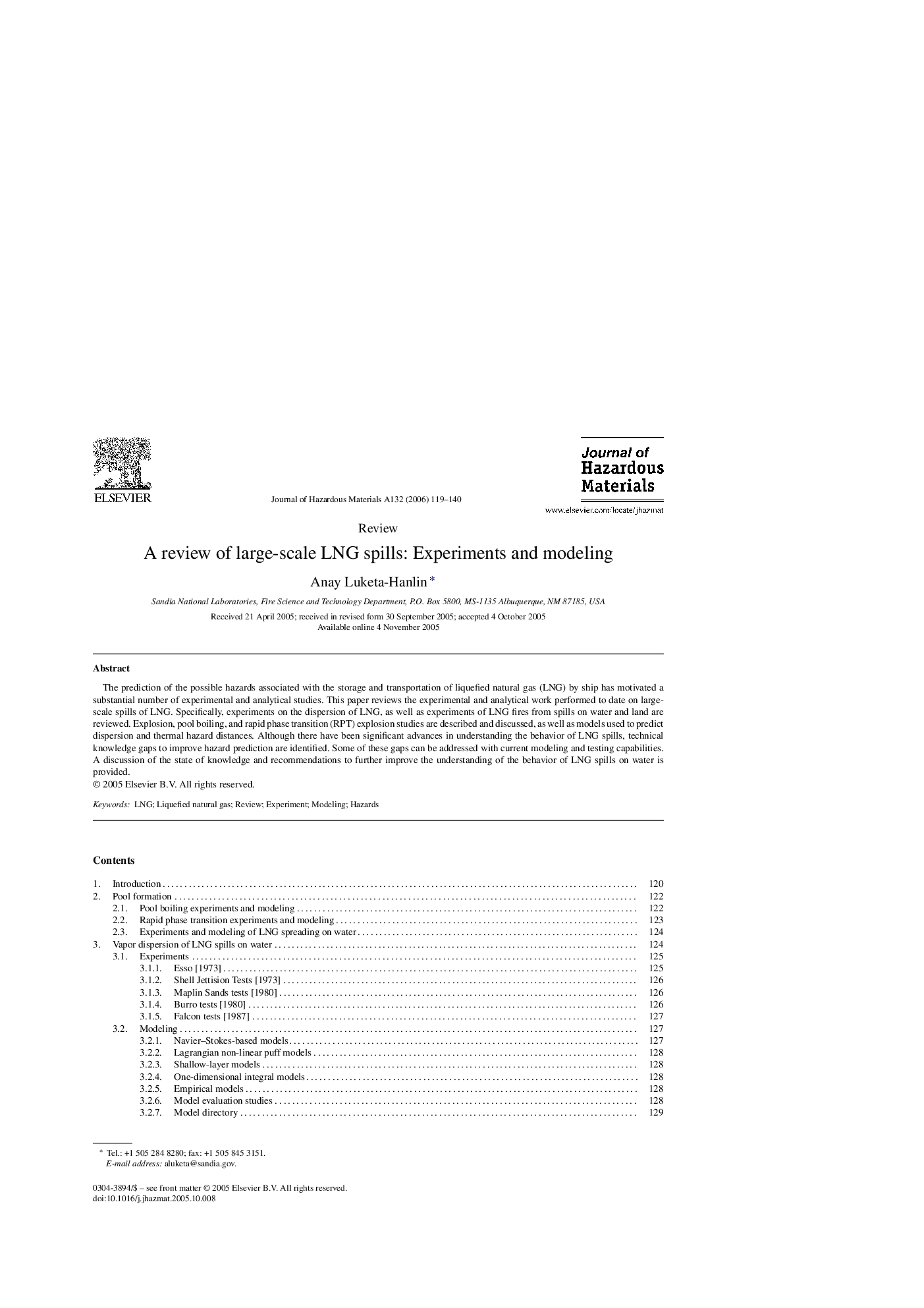| Article ID | Journal | Published Year | Pages | File Type |
|---|---|---|---|---|
| 585211 | Journal of Hazardous Materials | 2006 | 22 Pages |
Abstract
The prediction of the possible hazards associated with the storage and transportation of liquefied natural gas (LNG) by ship has motivated a substantial number of experimental and analytical studies. This paper reviews the experimental and analytical work performed to date on large-scale spills of LNG. Specifically, experiments on the dispersion of LNG, as well as experiments of LNG fires from spills on water and land are reviewed. Explosion, pool boiling, and rapid phase transition (RPT) explosion studies are described and discussed, as well as models used to predict dispersion and thermal hazard distances. Although there have been significant advances in understanding the behavior of LNG spills, technical knowledge gaps to improve hazard prediction are identified. Some of these gaps can be addressed with current modeling and testing capabilities. A discussion of the state of knowledge and recommendations to further improve the understanding of the behavior of LNG spills on water is provided.
Related Topics
Physical Sciences and Engineering
Chemical Engineering
Chemical Health and Safety
Authors
Anay Luketa-Hanlin,
